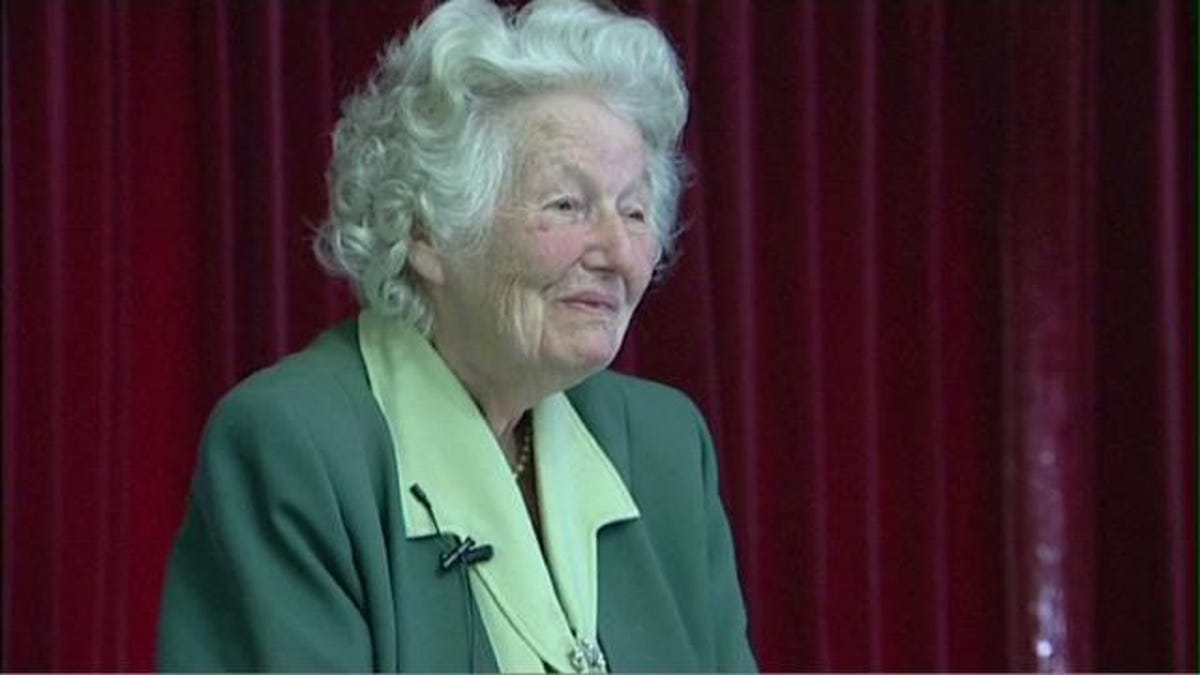 Why You Can Trust CNET
Why You Can Trust CNET Remembering legendary Enigma code breaker Mavis Batey
If you don't know of Mavis Batey, you should. Her work cracking the Enigma machine's coded messages was crucial to the success of D-Day landings during WWII.
Cracking one of the most complicated cipher devices ever created -- the Enigma machine -- may not have been what Britain's Mavis Batey envisioned when she studied the German romantic poets at University College London when World War II broke out.
But when she dropped out of school to help with the war effort by becoming a nurse, her German-language skills caught the attention of her superiors, and soon she was asked to train for a more covert kind of duty.
"So I thought, great," Batey recalled to The Daily Telegraph in an interview before her death this week at age 92. "This is going to be an interesting job, Mata Hari, seducing Prussian officers. But I don't think either my legs or my German were good enough because they sent me to the Government Code & Cipher School."
Her early work included searching for coded spy messages hidden in newspaper personal ads, which then led to her transfer to a unique research division dedicated to cracking Enigma machine messages in Bletchley Park. The division was called Hut 6 and headed by the respected code breaker Dilly Knox, who was well known for his cryptanalysis of Enigma machines.
Batey, who was only 19 at the time, cracked the code in an Italian Naval Enigma machine and eventually deciphered a significant message that detailed an attack against a Royal Navy supply convoy right down to how many cruisers and submarines would be involved. The intelligence was sent to the Royal Navy's commander of the Mediterranean Fleet, Admiral Andrew Cunningham, who then thwarted Japanese spies by going undercover to confront the Italian vessels with a surprise attack.
Batey, and the other code breakers under Knox's tutelage, were taught to think both inside and outside of the box, as in the case of these intricate machines. Batey reconstructed the wiring from the Italian Enigma machine to discover a major machine flaw that helped her team break even more coded messages.
Alongside Knox, she also collaborated with another female code breaker, Margaret Rock, to break the Abwehr Enigma machines used by the German secret service. Unlike other machines, this one used rotors that rotated with an unpredictable pattern, making it virtually impossible to decipher.
However on December 8, 1941, Batey was able to break a message that would enable the team to reconstruct a rotor. This discovery led to a second success in breaking the GGG, another complicated Abwehr Enigma machine whose intercepted messages proved that the Germans believed the faulty information they had been fed by double agents.
"What she did was absolutely critical at various points of the war," historian and Bletchley Park trustee Michael White told BBC News of Batey, calling her "something special."
As the last surviving member of the Enigma decoder experts of Bletchley Park, Batey wasn't allowed to even speak of her accomplishments for more than three decades due to the Official Secrets Act (though she was able to talk about her work to her husband, Keith, a fellow code breaker she met at Bletchley Park, when they were alone). She could not confide in her own children about her past, though she admitted in interviews that her family must have been suspicious when she and her husband could beat everyone at Scrabble.
After the war, Batey dedicated herself to studying the legacy of historic gardens in Britain, writing numerous books on the subject, as well as leading the crusade to protect English Heritage and gardening history.
After she was officially allowed to talk publicly about her classified past, she also wrote a biography of the man who taught her how to study the Enigma from the inside out with the book "Dilly: The Man Who Broke Enigmas" published in 2009.


